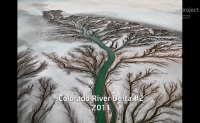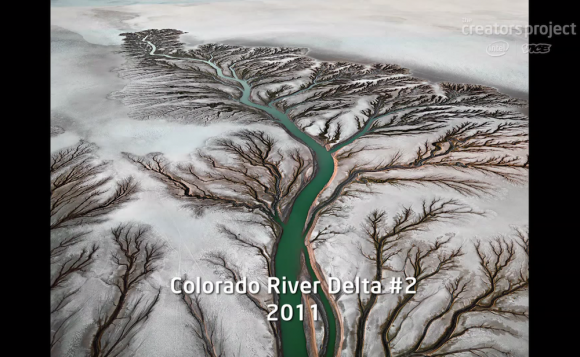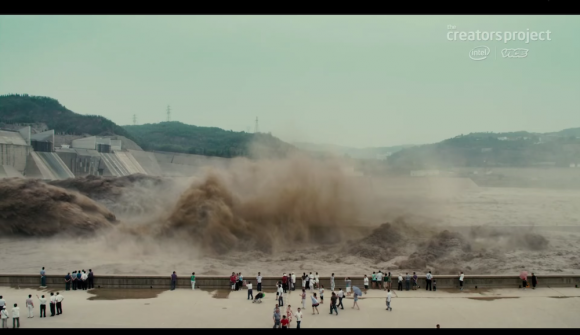“Watermark” documentary joins photographer Edward Burtynsky exploring the world of water
posted Monday, April 28, 2014 at 3:18 PM EST

Let's be honest: how often do we think about where our water comes from, and where it goes to, while using it? Probably not all that often. After all, most of us, living in a society where almost everyone has easy access to seemingly unlimited supplies of freshwater, it's easy to take that daily shower or bottle of spring water for granted. But when considering that only about 1% of the world's water supply is accessible as freshwater, things suddenly appear in a whole new light.
The documentary "Watermark," a feature-length film that is currently being screened in select theaters across the US, joins photographer Edward Burtynsky as he travels the globe to explore one of the world's most abundant, yet at the same time most lacking resources: water. Specifically, Burtynsky explores the ways that water shapes the human world, and the ways that humans shape the world of water.

To that end, his travels take him from the floating abalone farms off China’s Fujian coast to the construction site of the biggest arch dam in the world – the Xiluodu, six times the size of the Hoover Dam, to the barren desert delta where the mighty Colorado River no longer reaches the ocean. In each episode, Burtynsky explores the ways that humans interact with the water resources at their hands.
The documentary film is only one part of the greater "Water" project by photographer Burtynsky, who was previously commissioned by National Geographic to explore the topic of water in California. Part of the project is also a book as well as a photographic exhibition. The footage in the documentary was taken, among other cameras, with a prototype 5K RED Epic, while Burtynskys photographs were made with a Hasselblad digital medium format camera with a 60 megapixel back – all mounted to remote controlled drone copters in order to get the best possible view.

As the film's director Jennifer Baichwal puts it, "the richness of esthetic experience of this film was very much dependent upon the proper use of technology." Besides the RED Epic and the Hasselblad, other cameras used in the making of the documentary were a Canon EOS C300 camcorder and 5D DSLR, a Sony FS100 camcorder, as well as GoPro action cameras.
Below you can find a trailer for the film, as well as a short making-of feature. If you're interested in seeing the whole film, you can either purchase it as a digital download, or you can check this website to find out if it will be screened in a theater near you. More on Edward Burtynsky's work and the "Water" project can be found here.
(via SLR Lounge)